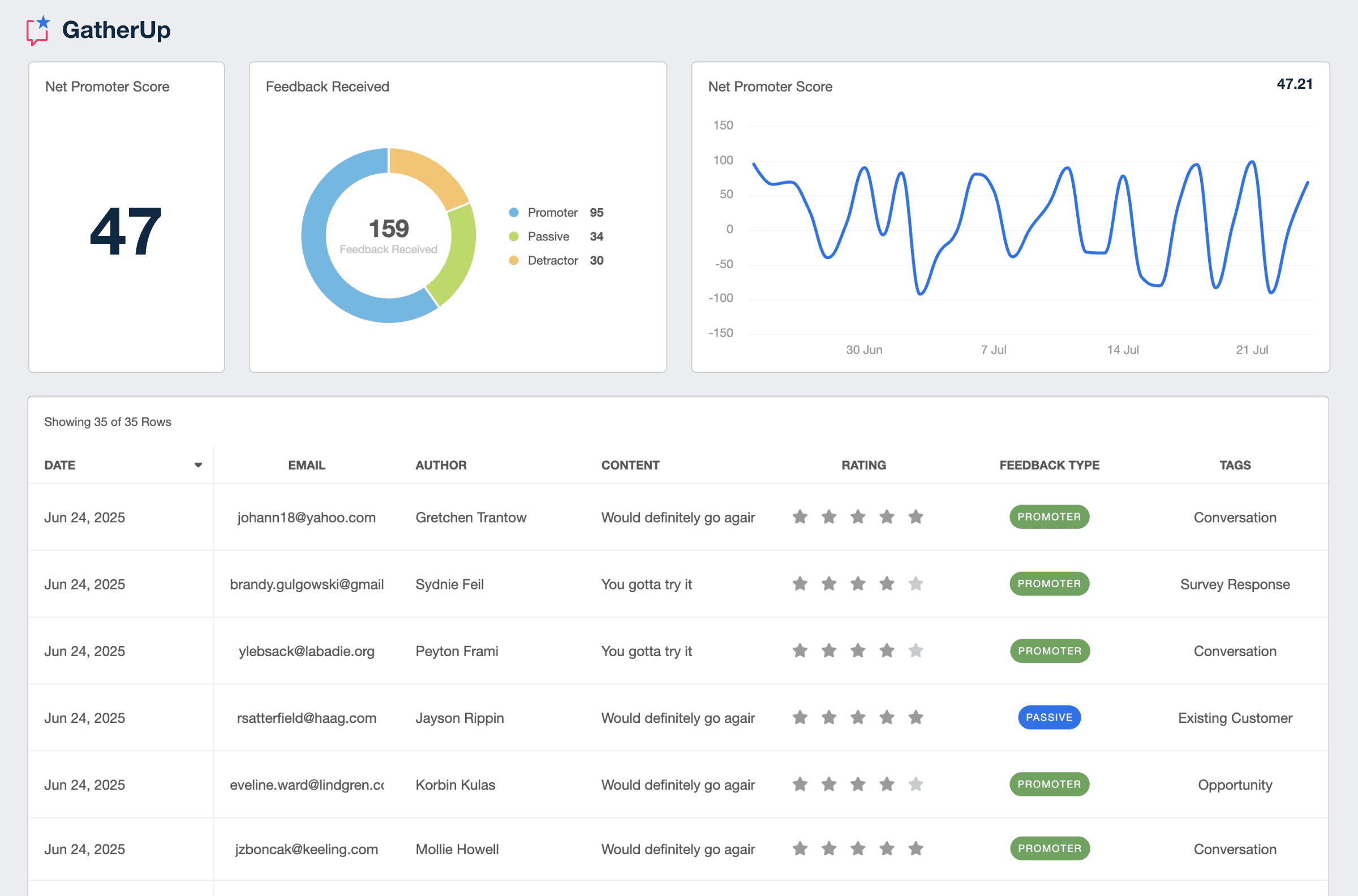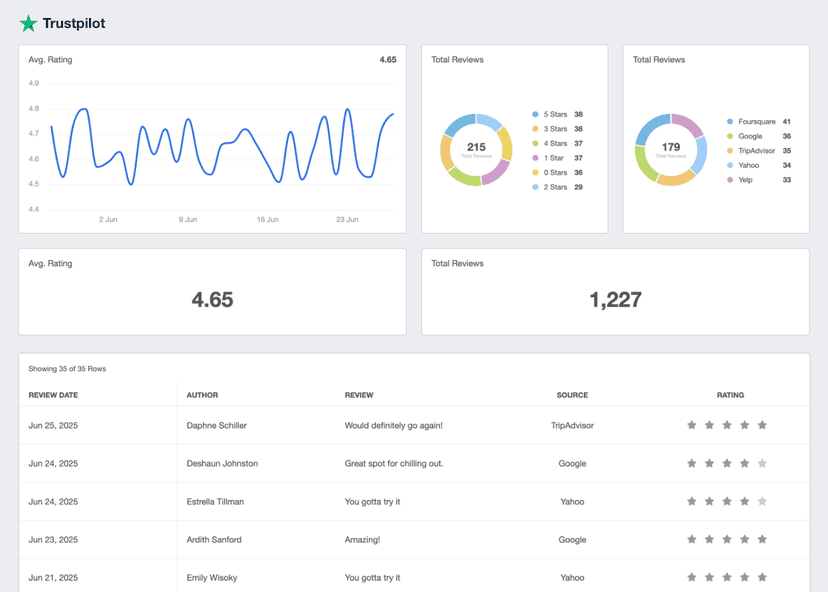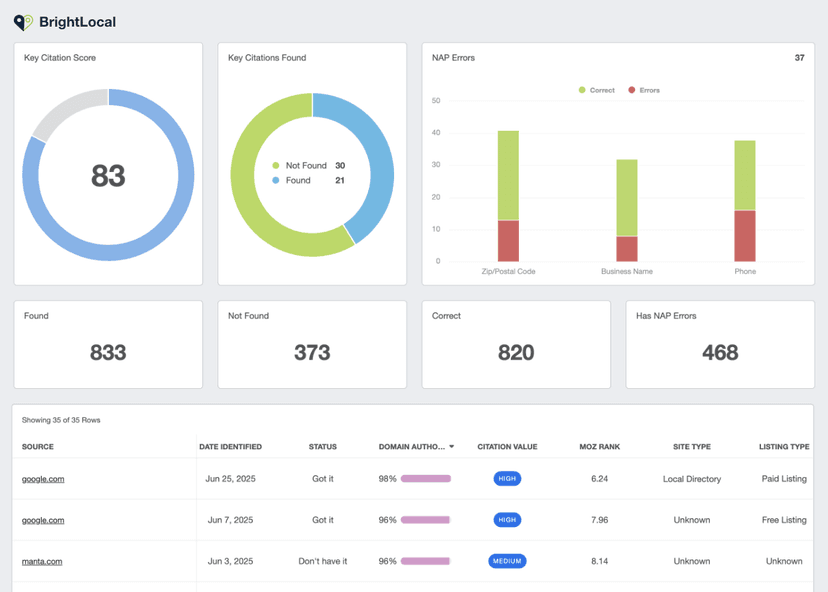NPS Detractors
Feedback Analysis
Use feedback to identify specific issues that negatively impact brand perception.
Internal Training
Address recurring issues to help staff improve customer interactions and provide solutions.
Content Creation
Acknowledge common concerns and provide value through content like blog posts and videos
Refine Policies
Identifying issues will lead to product, service, and process improvements.
Why Detractors Are Important
Detractors offer valuable insights into the less favorable aspects of a campaign or brand, acting as a direct line to customer dissatisfaction. By monitoring Detractor feedback, it becomes easier to pinpoint specific issues that turn potential or returning customers away.
This metric is essential for maintaining a healthy brand image and ensuring customer satisfaction. It helps identify problems, guides the development of solutions, and leads to more successful campaigns. Over time, this leads to a higher Net Promoter Score (NPS), which gives an overall measure of a brand’s credibility and user perception.

Stop Wasting Time on Reports. Get Marketing Insights in Minutes With AgencyAnalytics.
How Detractors Relate To Other KPIs
Viewing Detractors alone certainly provides useful insights. However, its true value shines when analyzed alongside other key performance indicators (KPIs). For instance, when paired with a Customer Satisfaction Score (CSS), it reveals a broader understanding of overall customer sentiment by positive and negative feedback.
Net Promoter Score (NPS) is a key customer satisfaction metric that uses Detractors as part of its formula. NPS categorizes customers into Promoters, Passives, and Detractors. Focusing on the Detractor segment in this triad provides specific insights into what drives customers away.

Top Customer Satisfaction Factors That Cause Detractor Customers
Unhappy customers are often a result of poor experiences at critical points in the customer journey. Negative interactions with customer service, product or service failures, and unmet expectations frequently lead to dissatisfied customers.
Net promoter score surveys often reveal these pain points, highlighting areas where existing customers feel neglected. These Detractors do have an upside, as NPS surveys help identify the factors that could turn other loyal customers into detractor customers. Understanding these elements is essential to improving overall NPS scores and fostering long-term customer satisfaction.

How To Calculate NPS
Calculating Net Promoter Scores involves a simple formula based on responses from an NPS survey. First, categorize respondents into promoters (9-10), passives (7-8), and Detractors (0-6). Then, subtract the percentage of detractor customers from the percentage of promoters. This result is the NPS score, which can range from -100 to 100.
NPS Formula Example
What Is an Acceptable Percentage of Detractors?
In an ideal world, there are zero Detractors. Realistically, though, this is not always the case, especially for larger or growing businesses.
Therefore, consider a good average for Detractors to be below 25%. This range suggests that a relatively small portion of the audience is dissatisfied, indicating effective targeting and messaging.
A lower Detractor percentage often correlates with higher customer satisfaction and brand loyalty.
What Is a Bad Percentage of Detractors?
A Detractor average exceeding 50% signals a red flag in a marketing campaign. It indicates that more than half of the audience holds negative perceptions, pointing to significant issues in targeting, messaging, or product offerings.
High Detractor rates may adversely impact brand reputation and customer retention, which is why it needs immediate review. For example, this may mean checking in with customer service reps, fixing product glitches, or doing damage control for a bigger issue.
How To Set Detractor Benchmarks and Goals
To start, analyze historical Detractor data from past campaigns, which helps establish a baseline or 'normal' range.Then, set a target Detractor rate lower than this baseline, aiming for continuous improvement. Understanding the impact of Detractors on broader business objectives (e.g., revenue, customer retention) will help to create realistic benchmarks and goals to aspire toward. Continuously monitor performance to minimize Detractor percentage and enhance overall campaign performance.
Why Detractors Matter to Clients
For clients, Detractors directly reflect customer sentiment towards their brand or product. They often use this KPI to gauge the effectiveness of their marketing strategies from a consumer's perspective, and how well those strategies align with their product-market fit.
Understanding the reasons behind negative feedback enables clients to make informed decisions. For example, it may mean making product improvements, customer service enhancements, or message adjustments. A lower Detractor rate correlates with increased customer loyalty and positive word-of-mouth referrals. In the long run, acting on Detractor feedback helps maintain a strong brand reputation and relevant campaigns.

Why Detractors Matter to Agencies
For agencies, Detractors are a critical indicator of campaign performance and strategy effectiveness. They provide actionable insights into which marketing efforts need to be improved to better align with the needs of the market. Over-promising and under-delivering can often lead to NPS Detractors, so this needs to be considered when crafting marketing campaigns.
This makes it easier to identify and rectify potential issues (e.g., targeting or channel selection). Reducing the number of Detractors also helps demonstrate an agency’s ability to drive long-term value for a client, optimize campaigns to drive the right kind of customer, and provide guidance that will enhance customer satisfaction. Over time, this reiterates the value of their services to clients and improves retention rates.

How To Use NPS Scores To Turn Detractors Into Promoters
Analyzing NPS scores from customer surveys is crucial in identifying areas of improvement. An effective NPS survey helps pinpoint why detractor customers are dissatisfied. Addressing these issues will significantly enhance customer experiences.
To turn NPS Detractors into promoters, prioritize resolving common complaints. Improving product quality, enhancing customer service, and exceeding expectations. A focused effort can transform detractor customers into advocates. Continuous feedback through NPS surveys allows for tracking progress and making necessary adjustments.
Personalized follow-ups and tailored solutions demonstrate that feedback is valued, fostering loyalty and improving overall NPS scores.
Discover the Reporting Tool Built for Marketing Agencies
Best Practices When Analyzing and Reporting on Detractors
A comprehensive understanding of Detractor data pinpoints specific areas for improvement and ensures campaigns resonate better. Here are some reporting strategies to monitor negative customer feedback and state what steps will be taken to fix it.
Verify Data Accuracy
Ensure that survey methods are unbiased and the sample size is representative of the target audience. Regularly review the data collection process to maintain the integrity of the Detractor metric.
Do a Time-Based Detractor Analysis
Evaluate Detractors over time to understand how changes in strategy impact customer sentiment. This provides insights into the effectiveness of marketing efforts over different periods.
Contextualize Detractors
Put Detractor data in context with other KPIs and market conditions. Understanding the broader environment in which Detractors occur provides deeper insights and aids in more accurate decision-making.
Share Trend and Anomaly Insights
Interpret trends and anomalies in Detractor data. Sudden changes or unusual patterns may indicate shifts in market dynamics or the impact of specific campaign elements.
Present a Channel Comparison
Assess Detractor rates across various channels. This comparison highlights which channels are underperforming and need strategic adjustments, as they may be targeting the wrong type of customer that does not align with the client's product or service offering.
Include Actionable Recommendations
Suggest specific changes or initiatives to reduce the Detractor rate. This may include providing more in-depth customer service or improving products.
GatherUp Dashboard Example

Related Integrations
How To Improve NPS Scores
Improving the NPS score is a critical aspect of any marketing strategy. Implement these tactics to transform negative perceptions and foster positive brand experiences.
Enhance Engagement
Focus on creating relevant content. Tailor messaging to resonate with target audiences and meet their expectations.
Improve Customer Service
Quick and effective resolution of issues may transform Detractors into Promoters, significantly improving brand sentiment.
Gather Detailed Feedback
Use surveys or direct communication to understand the root causes of dissatisfaction and address them quickly.
Related Blog Posts
See how 7,100+ marketing agencies help clients win
Free 14-day trial. No credit card required.











